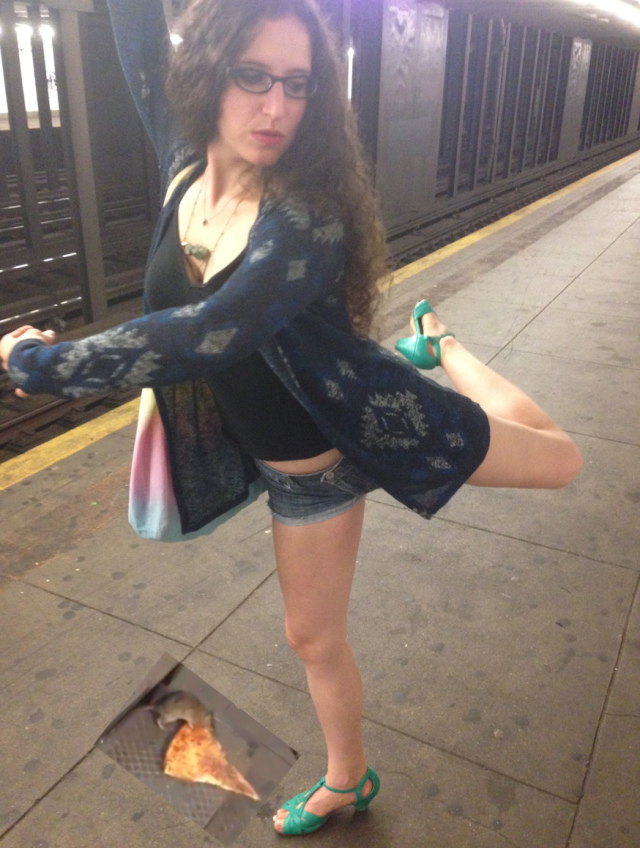
Claire and I conceived of our forthcoming prompt theme, “THAT’S NOT A MEME! Meme-oids & motifs in web writing,” as something to think toward over the course of this issue. In that spirit, we want to present a few working notes here.
An early note on how That's Not A Meme! (TNAM) might develop:
Let’s talk about limit cases, in consideration of the typologies and taxonomies developed in our meme studies, and situate memes in relation to (other) forms of web writing.
In part this is a critical prodding of academic procedure—the tendency to name, and to constrain discourse, which to some extent makes collaborative critical inquiry possible. Would this be (an) UnderAcademy if we didn’t undermine academic procedure, even if & as we’re using procedure for biz unusual?
Defining terms already involves deconstruction, but in the cycle of de/re/construction, the academy prefers that we bury our prefixes at the end of the project (which assumes there’s an end and an aim) so we can show the committees and chairs what we’ve constructed.
Hence our staged 4th-quarter outburst: THAT’S NOT A MEME! as old-school UAC gesture, a flip of the pig.
Cheers to the “Epic and Gestic” prompt discussion, with its digressive, cooperative color schemes and dispersive foci!
Questions of particular relevance to TNAM emerge, along with so much else: Not just what is a meme, but what isn’t a meme, and what is becoming-meme? Also, how might we recognize what memes already do—the (auto-)criticality inherent & readable in meme forms—while fortifying and adapting that capacity as thinkers, teachers and writers?
In other words, what if memes are already subversive, or if we can bring a subversiveness to the way we read and frame them (rather than imagining the only course of resistance is to create our own subversive memes, which may be patronizing if memes are already subversive or highly subvertable)? So perhaps we seek a willingness to take memes seriously (just as we take play seriously), rather than a project of fixing them (in the sense of recuperation, but also taxonomy). Can we admit that memes influence our thinking and writing at least as much as we might (hope to) influence memes? Or to bring this home, or try our best to drag it homeward, can we talk about Pizza Rat in this context, whether or not Pizza Rat is a meme?
Another note from TNAM prep:
Claire and I have been talking about how to frame our topic later in this text, and it’s very much bound to what happens between now and then (we want to discuss limit cases, maybe-memes, not-memes, and meme-oids, which everyone will be better prepared to consider later). So we're thinking of presenting a bit of our thinking process now, which might well reflect the open pedagogical methods of UAC. Which is all to say WE WANT TO TALK ABOUT PIZZA RAT (viral video and perhaps becoming-meme). If it memes, we’ll see it happen. If not, we’ll have an example of an internet sensation flaming out. Or we can just play THAT’S NOT A MEME! We have an ongoing conversation about the Pizza Rat video as college classroom writing tool.
A sample prompt:
Fill in the gaps in the story of Pizza Rat. What happens before the video starts: Who dropped the slice and how long did that person think about picking it back up? How many rats, roaches, toddlers and other New Yorkers had designs on the slice before P.R. got to it? And what happens after the video cuts off: Does Pizza Rat make another play for the slice, or is s/he stuck forever in that final gaze, a tiny pillar of parm? Finally, make macro or performative meme fodder out of the Pizza Rat video and give us another version.
Meme on, whether you meme it or not!
Here’s a sort of becoming-prompt.
that is not a meme
valorization: how art works ·
That’s not a meme meme
livetweet image macro?! ·
Print the Meme ·
Je suis Pizza Rat
Talan Memmott
Davin Heckman
Claire Donato
Sergio Figueiredo
Jeremy Hight
Jeff T. Johnson
Kelly Lydick
Mark Marino
Craig Saper
Orchid Tierney
Erik Zepka